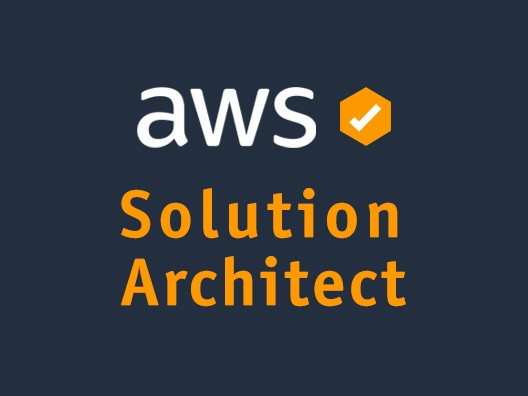How Can AWS Solutions Architects Improve Application Performance?

In today’s digital landscape, application performance is crucial for user satisfaction, business growth, and overall operational efficiency. As more organizations migrate to the cloud, AWS (Amazon Web Services) has emerged as a leading platform for building and hosting applications. AWS Solutions Architects play a pivotal role in optimizing application performance by leveraging the vast array of tools and services that AWS offers. This article explores various strategies that AWS Solutions Architects can implement to enhance application performance.
Understanding the Role of AWS Solutions Architects
Before diving into the strategies for improving application performance, it is essential to understand what an AWS Solutions Architect does. AWS Solutions Architects are responsible for designing and deploying scalable, highly available, and fault-tolerant systems on AWS. They assess the architectural needs of applications and recommend best practices to optimize performance, reduce costs, and improve security.
Whether you are looking to become a solution architect associate AWS or want to deepen your knowledge as an associate solutions architect AWS, understanding the core responsibilities of a Solutions Architect is vital. These professionals act as a bridge between technical teams and stakeholders, ensuring that application designs align with business objectives.
Key Strategies for Improving Application Performance
1. Leverage Auto Scaling
One of the most effective ways AWS Solutions Architects can enhance application performance is by implementing Auto Scaling. Auto Scaling automatically adjusts the number of EC2 instances in response to traffic demands. This elasticity allows applications to handle varying workloads efficiently, ensuring optimal performance during peak times while reducing costs during low traffic periods.
By configuring Auto Scaling policies based on real-time metrics, such as CPU usage or network traffic, Solutions Architects can ensure that applications maintain their performance standards, regardless of user load.
2. Utilize Content Delivery Networks (CDN)
AWS CloudFront, the content delivery network (CDN) service from AWS, plays a crucial role in improving application performance, especially for globally distributed users. By caching content closer to end users, CloudFront reduces latency and accelerates the delivery of static and dynamic web content.
AWS Solutions Architects can configure CloudFront to serve images, videos, and APIs with low latency, significantly enhancing the user experience. Additionally, by leveraging features like geo-restriction and custom SSL, architects can ensure secure and compliant content delivery.
3. Optimize Database Performance
Databases are often a critical component of application architecture. AWS Solutions Architects can improve application performance by selecting the right database solution for the application’s specific needs. AWS offers a variety of managed database services, including Amazon RDS for relational databases and Amazon DynamoDB for NoSQL databases.
By using features like read replicas, automatic backups, and multi-AZ deployments in Amazon RDS, Solutions Architects can enhance database performance and availability. Additionally, implementing caching strategies using Amazon ElastiCache can significantly reduce the load on databases and improve application response times.
4. Implement Load Balancing
Load balancing is another key strategy that AWS Solutions Architects can utilize to improve application performance. AWS Elastic Load Balancing (ELB) automatically distributes incoming application traffic across multiple targets, such as EC2 instances or containers.
By evenly distributing the workload, ELB enhances application availability and fault tolerance. Solutions Architects should choose between Application Load Balancers (ALB) for HTTP and HTTPS traffic and Network Load Balancers (NLB) for TCP traffic to optimize application performance based on the specific use case.
5. Embrace Microservices Architecture
Transitioning to a microservices architecture allows for greater flexibility and scalability. AWS Solutions Architects can design applications as a collection of loosely coupled services, each responsible for a specific functionality. This modular approach enables teams to deploy, scale, and manage individual services independently, leading to improved application performance.
Using AWS Lambda for serverless computing can further enhance this architecture by automatically scaling services based on demand without the need for provisioning or managing servers.
6. Monitor Performance with AWS CloudWatch
Monitoring is crucial for understanding application performance and identifying bottlenecks. AWS CloudWatch provides a comprehensive monitoring solution that enables Solutions Architects to track application metrics in real time.
By setting up CloudWatch Alarms and dashboards, architects can gain insights into application performance and set thresholds for automatic notifications when performance dips below acceptable levels. This proactive monitoring allows teams to address issues before they impact users.
7. Optimize Network Performance
Network latency can significantly affect application performance. AWS Solutions Architects can utilize services like AWS Global Accelerator to improve the availability and performance of applications by directing user traffic to the optimal AWS endpoint based on health, geography, and routing policies.
Additionally, leveraging AWS Direct Connect allows organizations to establish a dedicated network connection between their on-premises data centers and AWS, reducing latency and increasing throughput.
8. Use Infrastructure as Code (IaC)
Infrastructure as Code (IaC) is a best practice that allows Solutions Architects to manage and provision AWS infrastructure through code rather than manual processes. Using tools like AWS CloudFormation or Terraform, architects can define their infrastructure in a declarative manner.
By automating the deployment process, Solutions Architects can ensure consistency, reduce configuration drift, and quickly roll back changes if necessary. This automation not only speeds up deployment times but also helps maintain optimal application performance.
9. Employ Caching Strategies
Implementing caching strategies can dramatically improve application performance by reducing latency and the load on backend systems. AWS Solutions Architects can use Amazon ElastiCache to set up in-memory caching for frequently accessed data.
Additionally, utilizing browser caching for static resources can minimize round trips to the server, further enhancing performance. By intelligently caching data at various layers, Solutions Architects can optimize both user experience and application efficiency.
10. Conduct Performance Testing
Before deploying applications, it is crucial to conduct performance testing to identify potential bottlenecks. AWS Solutions Architects can utilize AWS services like AWS CodePipeline and AWS CodeBuild to integrate performance testing into the CI/CD pipeline.
By running load tests and performance benchmarks, Solutions Architects can gather valuable insights that inform architectural decisions and optimizations. Continuous performance testing ensures that applications remain performant as they evolve.
Conclusion
In conclusion, AWS Solutions Architects have numerous tools and strategies at their disposal to improve application performance. From leveraging Auto Scaling and CDNs to optimizing databases and monitoring performance, these professionals play a critical role in ensuring that applications meet the demands of users and stakeholders alike.
By adopting best practices and continuously evaluating performance, AWS Solutions Architects can drive significant improvements in application efficiency, scalability, and user satisfaction. As the landscape of cloud computing continues to evolve, staying abreast of the latest tools and methodologies is essential for any Solutions Architect aspiring to deliver high-performance applications.
This detailed article provides a comprehensive overview of how AWS Solutions Architects can enhance application performance, blending practical strategies with insights into the role’s responsibilities. By understanding and implementing these approaches, both aspiring and seasoned architects can effectively contribute to their organizations’ success in the cloud.





